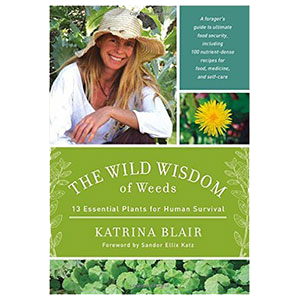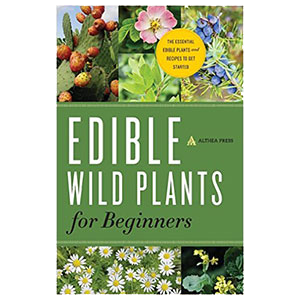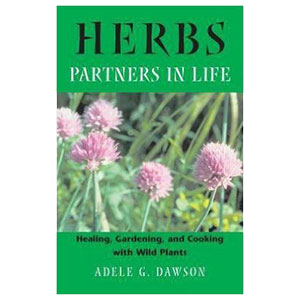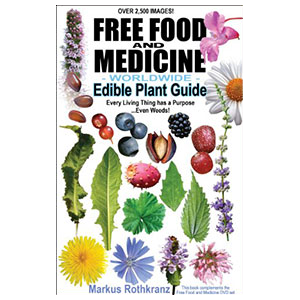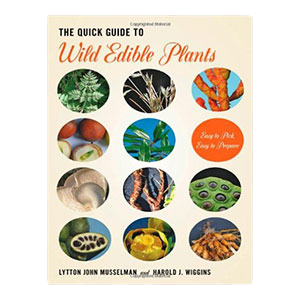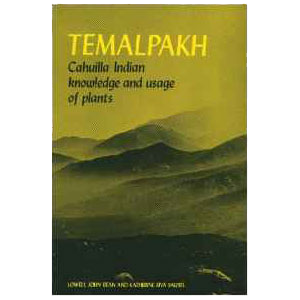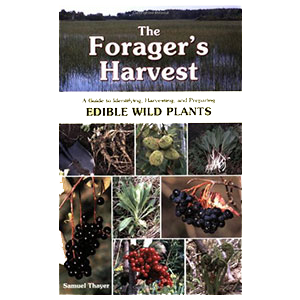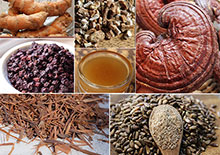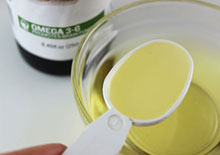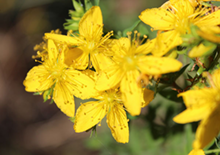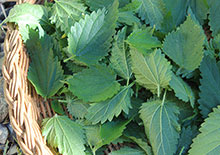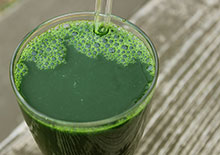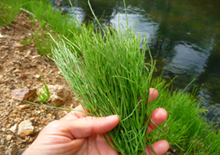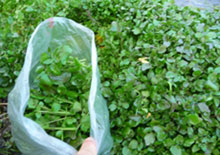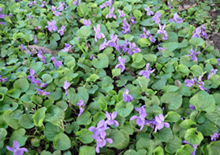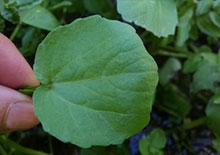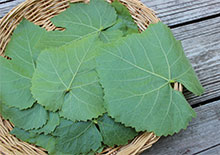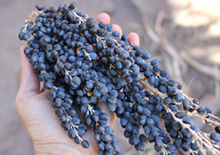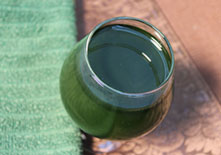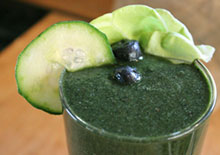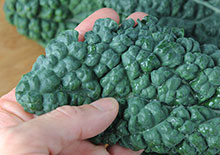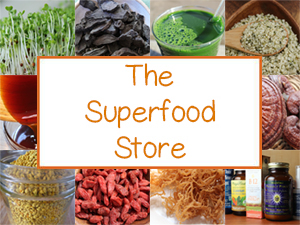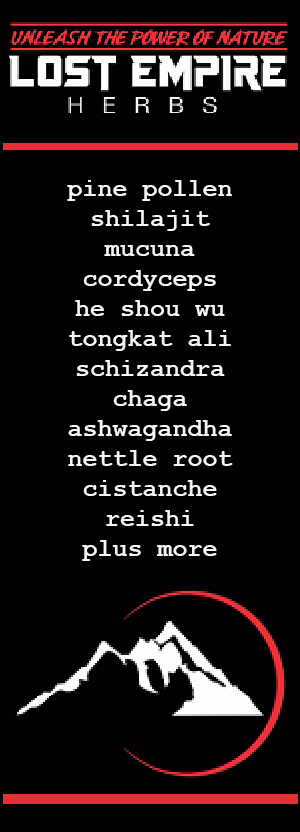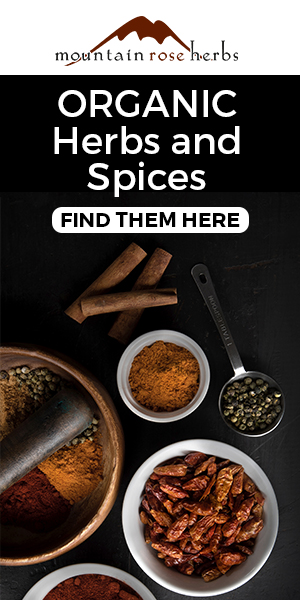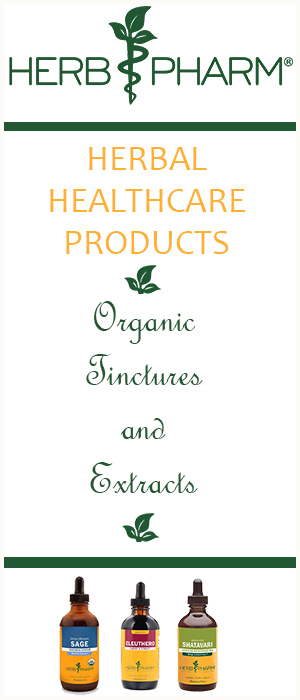- Home
- Wild Edible Greens
- Miners Lettuce
Harvesting Miners Lettuce, A Wild Green Superfood
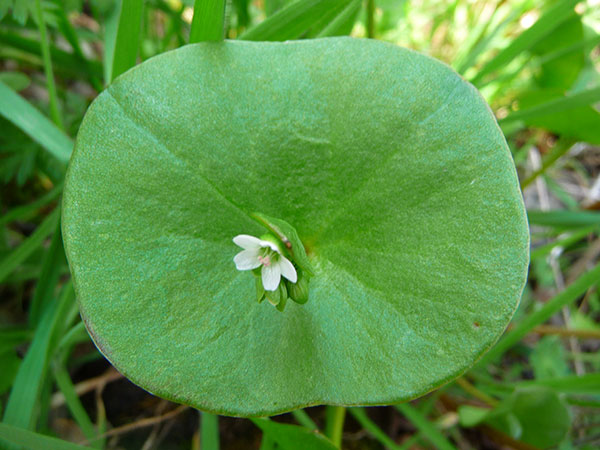
Miners lettuce (Claytonia perfoliata) is also called winter purslane, Indian lettuce, spring beauty and miners green, which are all names that reveal a bit about this amazing and succulent wild edible green.
Here in California gold rush territories, it is known as "miner's" lettuce which historically refers to the miners who came across this wild plant growing in large numbers throughout the foothills and various mining locations. It became a much valued food source that provided nourishment during times when other food supplies were running low or not available.
Back in the mid-1840's times were hard and life was a desperate struggle for survival. Those who were smart viewed this highly nutritious green as a gift from the earth to be consumed for its life-sustaining nutrients, including Vitamin C which helped to prevent scurvy for these gold mining immigrants.
Miners green tends to grow prolifically in late winter to mid-spring between cool springtime temp's of 60-80 degrees, particularly in partly shaded regions in woodland areas.
Being an annual herb that reseeds itself every year, it can grow in large numbers with prolific patches that can take up entire hillsides when the weather conditions are optimal.
Once you spot miners green growing wild on an untamed forested slope, you know you can come back and visit year after year to enjoy bags of the lettuce free for the taking.
This is, of course, assuming that rainfall has been adequate and previous drought has not occurred that winter. Miners lettuce, like other spring greens such as chickweed, red clover and mallow, need a good amount of moisture in the soil in order to produce abundant and large leaves. If there is not a good amount of water to feed them, they tend to come up but are much smaller in size.
The lettuce can have a longer growing season depending on the location. It seems to do quite well for many months on the California coastline because of the cool, foggy summer conditions that emanate spring-type weather further inland.
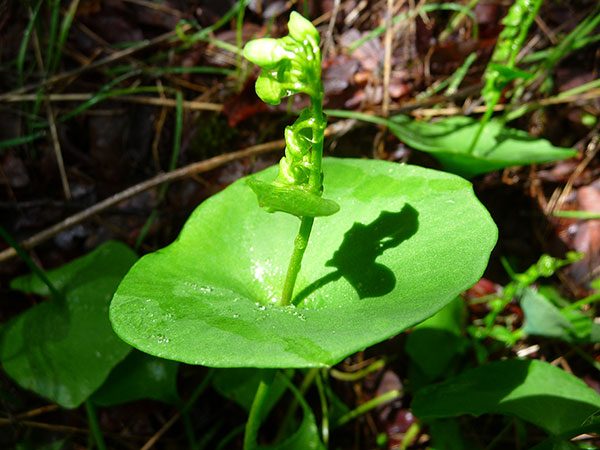
Miners Lettuce Benefits
Purifies the Blood and Lymph System
Spring is the traditional time of year to partake in cleansing rituals that involve some kind of fasting process. Many herbalists believe that these wild greens are offered during this time of year specifically to be gathered and used to cleanse the body.
Miners green is one of these purifying greens that helps to fortify and filter our blood and lymph systems when consumed.
Being high in chlorophyll, in addition to mentioned antioxidant-rich nutrients, like Vitamin C, the lettuce can be a great detoxifier, helping to eliminate environmental toxins and heavy metals stored in the liver.
Miner's lettuce can be juiced for concentrated effects during a juice fast. Cleansing teas using liver herbs can also be ingested during this time to adjunct the benefits of this wild springtime cleanser.
Contains Omega Fatty Acids
Miners lettuce is closely related to the wild purslane plant. This is evident through its similar thick and succulent-type leaves. Purslane is known for its higher levels of Omega-3 fatty acids which are prevalent in all green leafy vegetables to certain degrees. Although Claytonia perfoliata has never been officially tested for Omega-3's in our research, we believe that more of this nutrient may be present because of its relationship to the purslane family.
Omega-3 fatty acids (or ALA) acts as an anti-inflammatory and helps to
counteract the pro-inflammatory effects of LA Omega-6 fats and their
derived oils. Our top recommended source of ALA is, without a doubt,
dark green leafy vegetables. A health-promoting diet should include large amounts
of them on a regular basis. Miners lettuce can be a great source of wild ALA that can be foraged in the late winter to mid-spring.
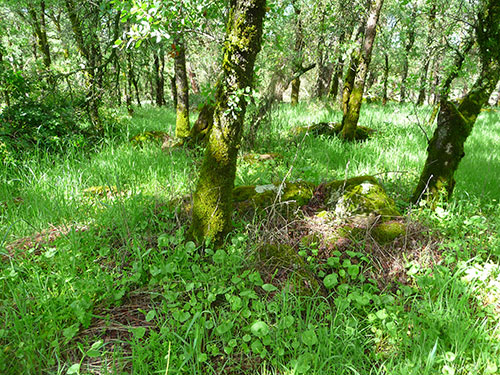
Benefits of Wild Foods
The nutritional components of wild foods
provide us with a greater proportion of nutrients than vegetables we
eat today, so it is good to include them in your diet as much as
possible.
It is estimated that ten thousand years ago humans
consumed about 390 mgs/day of Vit. C from wild foods. Today the average
person consumes about 88mgs of Vit. C/day from cultivated fruits and
vegetables. Even just one cup of wild purslane contains over 20% Vit.
C, the recommended daily intake.
In addition to the nutritional value found in plants, foods that grow wild and unattended are strong and resilient. These characteristics are, we feel, passed along to those who ingest them.
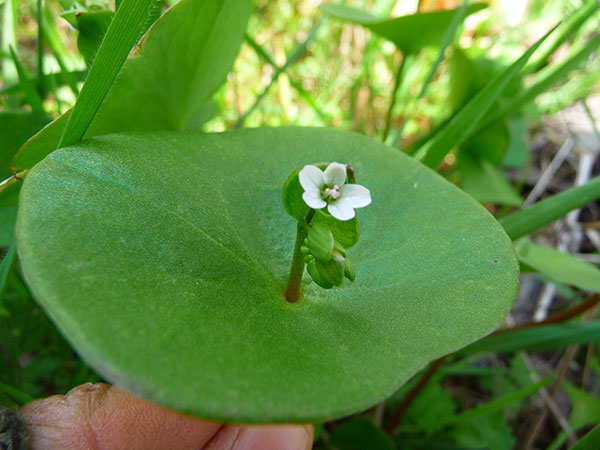
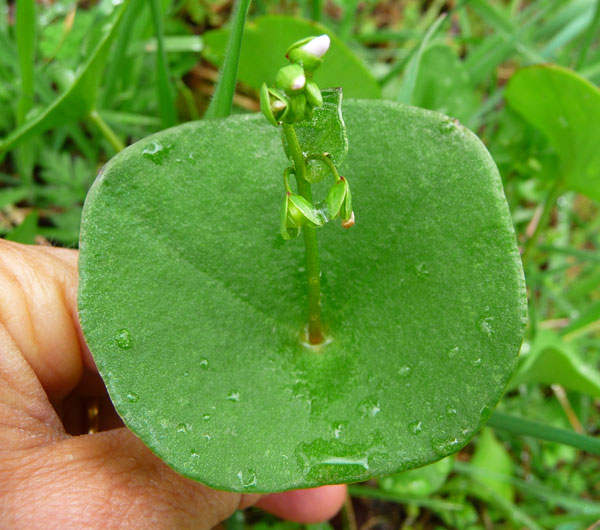
Claytonia Perfoliata Identification
Californians recognize this dainty, yet hardy green leaf as familiar to just about every town, city, local park, backyard and wild foothill zone. We have personally seen it growing out of the cracks of city sidewalks in the heart of downtown San Francisco.
Claytonia perfoliata is quite easy to identify after you have experienced it up close and personal for the first time. It has a distinctive round-shaped leaf with the stem piercing through the center and flowering mid-way up. This stem can get quite tall and has one main leaf branching off of it along with several small flowers and seed pods.
There are usually a few tiny five-petaled white or pink flowers opening up in early spring in sunlit areas. These flowers, as well as the stem, are edible, but it is best to harvest the leaves before it starts to seed.
According to Wikipedia, the plant grows to a "maximum of 40 cm in length, but mature plants can be as small as 1 cm."
Miners lettuce, or winter purslane (a very common name in areas besides California), is native to Western mountain and coastal regions of North America, Canada, Alaska and Central America, but has also made its way all over the world where growing conditions are adequate.
As the name "Indian lettuce" implies, it was a common food of many Native tribes throughout the Western U.S. and Canada.
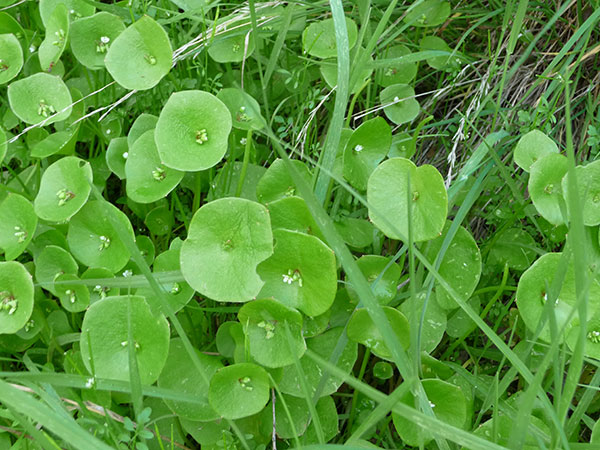
Spring Lettuce Harvest
There is nothing quite like "nature shopping" for your produce. It can be quite a magical experience and a communion with the natural cycles of life, often forgotten in our modern-day world.
Moreover, there is no comparison to the untamed life-force flowing through these uncultivated foods. All vegetables and hybridized foods, in fact, originated at some point as wild edible plants. These are Mother Nature's superfoods and we always recommended you include them in your diet whenever possible.
As we mentioned above, these greens are great spring
cleansers for the body, popping up from the earth to provide us with
free super chlorophyll-rich energy for the liver and lymph. Chickweed, another powerful lymph system purifier, often grows right next to "winter purslane" or miner's lettuce, so keep an eye out for that one too.
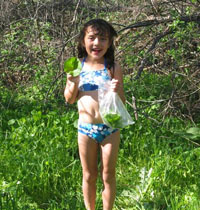
When wildcrafting wild plants it is always good to make sure you are at least a 1/2 mile from any major road to prevent contamination from exhaust fumes.
Once you identify a patch of fresh miners lettuce, you will most likely find many bountiful patches growing very close by if you hike around a bit. We usually harvest greens in the early morning hours when the dew is still fresh on their leaves.
If you are a parent,
you know that most young children love to help you wildcraft foods from
wild places. This includes any kind of wild fruit or nuts, wild edible
flowers as well as greens.
Harvesting food in this way brings back our primal nature, connecting us to the earth and its natural intrinsic balance and harmony.
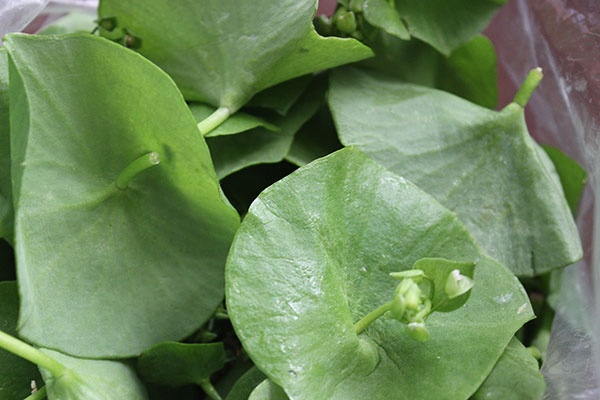
How to Harvest Miners Lettuce
1) To harvest miners lettuce, pick the stem as
close to the leaf as you can get. For juicing, however, you can actually pick lower down on the stem so you have more plant material to juice.
You can place your thumb on the stem and pull off the leaf with your index finger. Once you get the technique down you can harvest a big bag very fast using two hands in rotation with your bag tied at your waist right in front of you.
2) There will most likely be different sizes of leaves, some can get rather large. When harvesting with kids, it can be a fun game to try to find the biggest leaves.
It is always a good idea to try not to over-harvest an area. You want to make sure you leave some healthy specimens behind to reseed for the next year's growth.
3) After you gather your lettuce leaves you might want to double-check to make sure you do not have grass or other non-edibles that might make their way into your bag of greens.
4) We personally prefer not to wash our lettuce, because doing so will wash away all the beneficial organisms that are present on the surface of the leaf. This is why we also choose areas that are clean and free of dust or dirt. Most wild lettuce we have come across is very clean because of the springtime rainfall.
5) Miners lettuce can be stored in the fridge for many days just like any other leafy green.
How to Use
When making wild green salads miner's lettuce is often considered the "romaine or iceberg" equivalent that usually makes up about half of your salad. It's not called "lettuce" for nothing.
The leaves are not only quite large in size but are also subtly sweet, tender and very pleasant
tasting compared to other wild collectible greens that tend to have
stronger flavors or coarse textures. They are often described to taste like a combination of bean sprouts and spinach.
They should be eaten or prepared fresh, like other types of lettuce, as oppose to dried like nettles and other herbs.
We have been harvesting the thick round leaves of this wild edible for many years, enjoying the tender lettuce in green smoothies, salads and green juices.
We know some people who steam it like spinach but have not personally tried it this way.
See our other pages on harvesting in the links below.
Precautions:
For the wildcrafting newbie, it is important to properly identify all wild plants before you eat them. Some varieties are quite poisonous and even deadly. So take heed and use a wild plant identification guide if you are at ALL unsure.
Shop Related Products (About Affiliates & Amazon Associate Paid Links)
Affiliate Disclaimer: This section contains affiliate product links. If you make a purchase through our recommended links, we receive a small commission at no additional cost to you. Thanks for the support.
